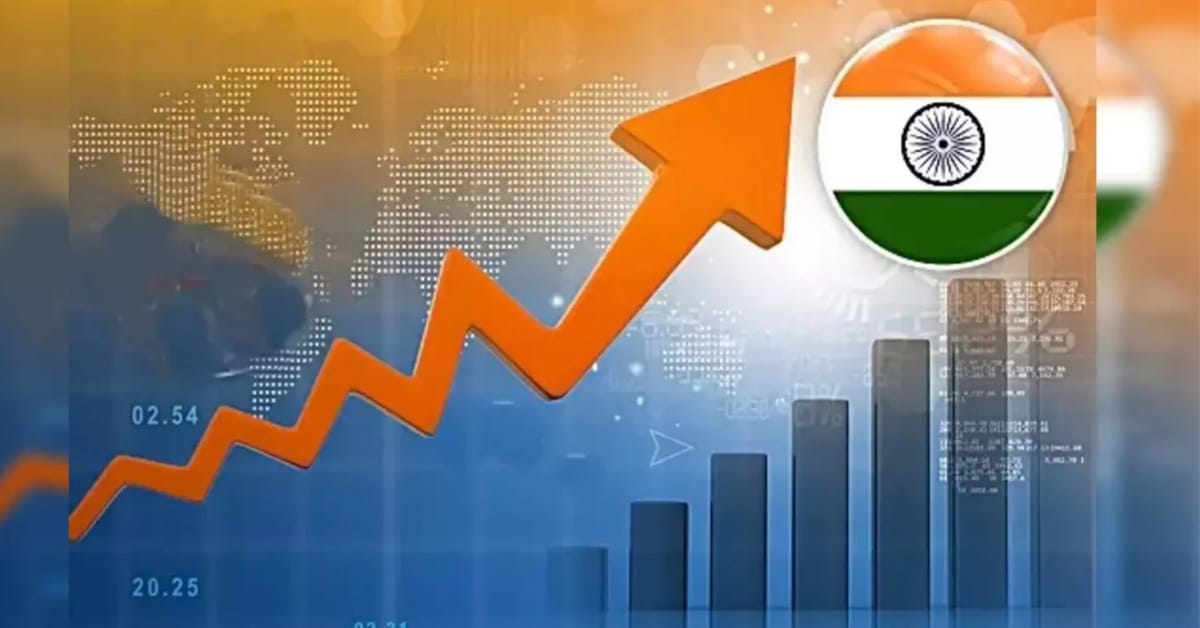India’s manufacturing and services sectors have eased into sustainable growth after reaching historic peaks, demonstrating their resilience in trying times.
In the world of economic indicators, numbers tell stories that often defy simple interpretation. When India’s services sector registered a 15-year high in August, champagne corks popped in boardrooms across Mumbai and Bengaluru. But September’s slight pullback to a PMI of 60.9 has sparked a more nuanced conversation: Is this cooling a cause for concern, or simply the natural rhythm of a maturing economic powerhouse finding its stride?
The Growth Symphony
Consider the Indian economy to be an orchestra. The woodwinds and strings that give depth and continuity, known as the services section, have been playing above the critical 50-point mark for more than four years without missing a beat.
Any conductor would be proud of the fourth consecutive month above 60, which was September. The music continues with amazing energy even though the tempo slowed from August’s crescendo of 62.9.
In contrast, the manufacturing division produced an outstanding solo in August, reaching a 17-year high before settling in September at 57.7. Instead, it symbolises unity—two vital sectors working together, modifying their speed without losing forward motion.
Reading Between the Lines
Not only are the figures fascinating, but so is the narrative they convey about India’s place in the world economy. The anecdotal evidence from the survey depicts an economy that is supported by technological investment, buoyant domestic demand, and supportive government policies—a trinity of strengths that protects against external shocks.
However, the obstacles are real and well-documented. India’s IT and outsourcing giants now face real difficulties as a result of President Trump’s policy changes. The talent mobility highway is slowed down by stricter H-1B visa requirements and higher application fees. Planning for the future is made more uncertain by the possibility of reciprocal tariffs on digital services.
But here is the intriguing twist in the story: adversity fostering innovation. US clients restricted by decreased budgets and looking for ways to cut costs are not only setting up their Global Capability Centres in India but are also accepting the offshore delivery models. Something that used to be a blockage is now turning into a road connecting more high-end remote work with India.
The Optimism Index
Maybe the most clear sign is not the headline PMI but what the chief India economist at HSBC, Pranjul Bhandari said: that the Future Activity Index jumped to its highest level since March. This is not just data—it’s a vote of confidence from businesspeople. They watch the future and see opportunities instead of obstacles.
This future-oriented optimism is surrounded by real things. New orders are indeed on the rise, though more gradually. The international sales are still growing. Employment is going up. Although the composite PMI of 61.0 is lower than 63.2 from August, it is still very much above the long-term average and the neutral threshold.
Economic progress is seldom straightforward. The September decrease in India’s services and manufacturing sectors do not represent a drop in power—rather they signify the natural, less than expected flow of better-managed, and global crosscurrents negotiated with extraordinary skill.
Without any doubt the private sector in India has been allowed to take more than a deep breath with no alarm bells triggered after more than four years of constant growth. The structure is very strong: domestic demand is still strong, technical investment continues, policy support is still there and in fact business confidence about the future is on the rise.
In the great story of India’s economic rise, September 2025 will probably not be recalled as a faltering moment, but as a point of readjustment when an economy that was sprinting learned to pace itself for a longer race ahead. Sometimes, the smartest step is not to sprint but to run with intelligence. India is apparently following that path.









